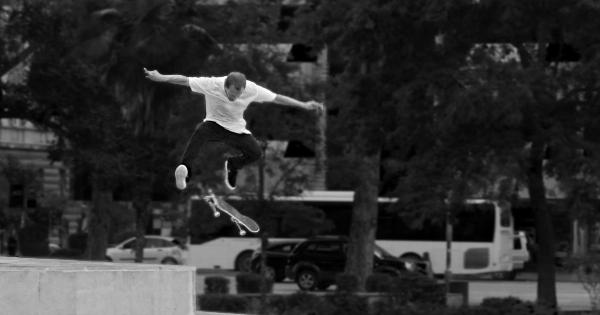Meniscus rupture is a common injury that athletes dread, as it can hinder their performance and even end their careers. The meniscus is a C-shaped piece of cartilage in the knee joint that acts as a shock absorber and provides stability to the joint.
When this crucial structure gets ruptured, it can result in pain, swelling, limited range of motion, and instability.
Anatomy of the Meniscus
The meniscus is made up of two components, the medial meniscus on the inner side of the knee, and the lateral meniscus on the outer side.
Together, these structures play a vital role in distributing weight and reducing pressure on the knee during movement, especially during activities such as running, jumping, and pivoting.
Causes of Meniscus Rupture
Meniscus tears can occur due to various reasons. The most common causes include:.
- Twisting or rotating your knee forcefully while it is bearing weight.
- Squatting or deep bending of the knee, especially with added weight.
- Direct trauma to the knee, such as a tackle or a collision.
Symptoms of Meniscus Rupture
Athletes who experience a meniscus rupture may present with the following symptoms:.
- Pain, especially along the joint line or at the inner or outer side of the knee.
- Swelling and stiffness in the knee joint.
- Difficulty straightening the knee or experiencing a locking or catching sensation.
- Feeling of instability or the knee giving way.
Diagnosis
When an athlete seeks medical attention for knee pain and suspected meniscus injury, a healthcare professional will perform a thorough physical examination. This may involve the following:.
- Assessing the range of motion of the knee joint.
- Palpating the joint line for pain or tenderness.
- Performing specific tests like McMurray’s test and Apley’s compression test to check for meniscus tears.
If a meniscus rupture is suspected, imaging tests such as X-rays or magnetic resonance imaging (MRI) may be ordered to confirm the diagnosis and assess the severity of the injury.
Treatment Options
The treatment approach for meniscus rupture depends on various factors, including the severity of the tear, location of the tear, age, and level of activity of the athlete. The following treatment options may be considered:.
- Conservative treatment:
For minor tears or in cases where surgery is not immediately necessary, conservative treatment options can be effective. This may include rest, ice, compression, and elevation (RICE), along with physical therapy exercises to improve strength and flexibility. The use of non-steroidal anti-inflammatory drugs (NSAIDs) for pain relief may also be recommended. - Arthroscopic surgery:
When conservative treatment fails to provide relief or in the case of more severe tears, arthroscopic surgery may be required. This minimally invasive procedure involves using a small camera and surgical tools inserted through tiny incisions to repair or remove the torn portion of the meniscus. - Meniscus transplant:
In some cases, if a significant portion of the meniscus is damaged and cannot be repaired, a meniscus transplant may be an option. However, this procedure is less common and usually reserved for younger, active individuals.
Recovery and Rehabilitation
Regardless of the treatment option chosen, rehabilitation and recovery play a crucial role in regaining full function of the knee and returning to sports. Rehabilitation after meniscus rupture may involve:.
- Physical therapy exercises to improve strength, flexibility, and joint stability.
- Gradual return to weight-bearing activities, following the guidance of a healthcare professional.
- Monitoring and managing post-operative pain and swelling.
- Bracing or taping the knee for added support during activities.
Prevention Tips
While meniscus ruptures are challenging to completely prevent, there are steps athletes can take to reduce their risk:.
- Regularly perform exercises that focus on strengthening the muscles around the knee, such as quadriceps and hamstrings.
- Maintain a healthy weight to minimize stress on the knees.
- Ensure proper technique and form during sports activities and avoid sudden, jerky movements.
- Wear appropriate protective gear, such as knee pads in sports like volleyball or basketball.
- Listen to your body and avoid pushing through pain or discomfort.
Returning to Sports
Returning to sports after a meniscus rupture requires careful consideration and guidance from a healthcare professional.
Factors such as the type and severity of the tear, surgical intervention, and the athlete’s progress during rehabilitation will determine the appropriate time for resuming sports activities.
A gradual return to activity is typically recommended to ensure the knee has fully healed and regained its strength and stability.
Athletes may need to modify their training or technique to prevent re-injury and gradually increase their intensity and duration of sports activities.
Conclusion
Meniscus rupture can be a significant setback for athletes, causing pain, limited mobility, and affecting their performance.
Seeking proper diagnosis, timely treatment, and following a comprehensive rehabilitation plan are crucial for successful recovery. By taking preventive measures and listening to their bodies, athletes can reduce their risk of meniscus injuries and hopefully avoid the nightmare of a ruptured meniscus altogether.





























